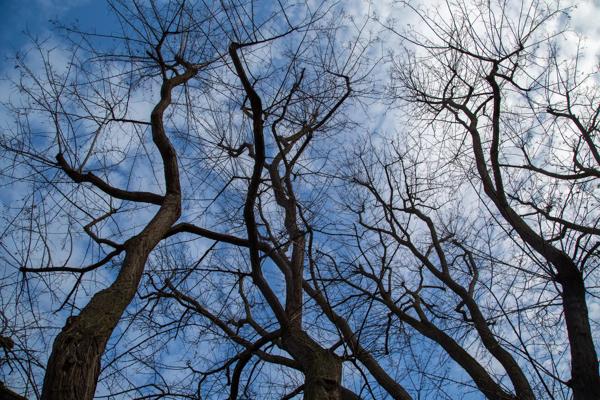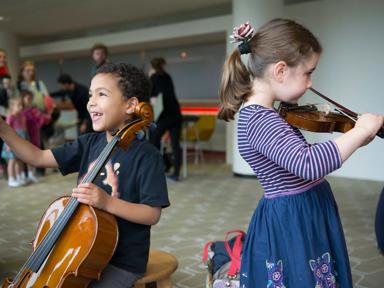This spring, get to know some urban trees

Did you know that London is home to 8.3 million trees and 8.6 million people? According to the UK’s Forestry Commission, that makes it the world’s biggest urban forest.
To celebrate the trees that live alongside us in our cities – trees that are currently bursting into bloom all around us – we commissioned poets, artists and tree specialists to write about some of the Southbank Centre’s urban trees. Here are their unique takes on our London plane trees and black locusts.
Greg Packman, an arboriculturist (the word for someone who looks after trees), invites us to look out for the ‘hidden flowers’ growing along the branches of London plane trees.
Hidden away in the tall, towering plane trees of London are small, subtle flowers. These female flowers, or inflorescences, emerge from the young shoots and form dense clusters of red flower heads on a stem. The wind blows the pollen from one tree to another, from male flower to female. Once pollinated they mature into dense fruit clusters, consisting of hundreds of tiny seeds called ‘achenes’. These seeds are also dispersed by the wind, in the hope that they will land somewhere a new tree can grow. The bristly fruits are visible year-round and are a hallmark of the plane tree but the female flowers are only there for a few weeks of the year. Have a close look in April to see if you can find them.

Matt Steinmann, an arboriculturist from The Royal Parks, introduces us to the black locusts (Robinia pseudoacacia) that grow in front of the Southbank Centre’s Royal Festival Hall.
Robinias – also known as false acacias, or black locusts – have elegant compound leaves composed of between nine and 19 leaflets, white flowers in the spring and their fruit is in the form of delicate seed pods, revealing their membership of the bean family (fabaceae). The deeply textured bark of its trunk gives way to a spreading form and the compound leaves of the canopy filter sunlight with particular delicacy. Like other members of their family, the species fix nitrogen in the soil and so as a ‘pioneer’ species prepare the soil for other plants. These early mature trees are likely to be a similar age to the nearby Royal Festival Hall, which opened in 1951. As they reach full maturity they should become elegantly contorted, giving the tree an appearance of great age. The fierce spines you should be able to see on the branches make this a species those working on trees treat with respect!

Nina Mingya Powles, poet and winner of the inaugural Nan Shepherd Prize, 2019, recalls the plane trees that grew in the city she lived in as a child.
Plane tree in Mandarin is 法国梧桐, French phoenix tree, or 悬铃木, hanging bell tree. London plane trees, Platanus acerifolia, are a hybrid species. They line the streets of Shanghai where I lived when I was a girl, planted there by European colonists to remind them of home. We walk under the plane trees while clouds of pollen drift down like snow. It’s too hot for spring. Each year the heatwaves come too soon. The hard little starburst fruits have begun to split open and seeds of the plane tree spill out into the warm air. They get caught in my hair. They stick to my damp skin. I look up and I’m in another city, in a dream, in which the same wide leaves filter out polluted sunlight. I can hear the tree breathing in the rain.
Texts commissioned as part of the Hayward Gallery exhibition Among the Trees.
Participating writers include Holly Corfield Carr, Chris Mason of the charity Trees for Cities, Zakiya Mckenzie, Greg Packman, Nina Mingya Powles, Matt Steinmann of The Royal Parks, Fiona Stafford, Luke Turner, Marina Warner and Paul Wood.
Among the Trees was at Hayward Gallery from 4 March until 31 October 2020.
